
16 Best AI Chatbots To Use In 2025 [Free & Paid]
AI chatbots have taken the world by storm. ChatGPT, Google Bard, and Jasper are only some AI tools that have managed to get a loyal fanbase.
The reason? Mainly time and speed. These AI chat apps can now give fast responses, automate tedious tasks, are available 24/7, and even help businesses stay competitive.
Today, we’ll take a look at the best AI chatbots you can use to power up your brand, pass the time, or improve your creative writing skills.
What You’ll Find In this Guide
- Definition of AI chatbot
- The difference between AI and Rule-based chatbots
- The key features an AI chatbot needs to have
- Most popular use cases
- The best AI chatbots with pros & cons
- The most common limitations
What Is An AI Chatbot?
An AI (Artificial Intelligence) chatbot is a program designed to simulate human conversation. Users can interact with it through text or voice messages and the goal is to get assistance, and information, or perform more complex tasks.
AI vs Rule-Based Chatbots
Both AI and rule-based chatbots fall under the broader category of conversational AI. However, they operate quite differently.
Rule-based chatbots follow pre-defined rules and decision trees to operate, which means they can only provide limited answers. Also, they have limited flexibility and they are often used for simpler tasks, such as FAQs, etc.
AI chatbots, on the other hand, use machine learning algorithms and Natural Language Processing (NLP) to understand the context and intent behind user queries. Context awareness makes AI chatbots capable of providing more nuanced responses to complex questions. Lastly, some can even learn from past interactions to offer a more personalized experience.
Key Features Of AI Chatbots
All AI chatbots share some common features, making them the powerful tools that they are. Now let’s take a look at them.
- Natural language processing: AI chatbots possess NLP capabilities, allowing them to understand, interpret, and generate human-like text, enabling more natural interactions with users.
- Context awareness: Advanced tools, such as ChatGPT, can understand the context in which a conversation is taking place, allowing for more nuanced and relevant responses.
- Learning over time: Some have the ability to learn from past engagements, which helps them provide more personalized responses. This feature can vary due to privacy considerations.
- Multi-functionality: Also, they can perform a variety of tasks, from answering FAQs and booking appointments to providing product recommendations, troubleshooting issues, and creating email templates.
- Multi-platform availability: AI chatbots can often be integrated into various platforms through API, including websites, messaging apps, and even voice-activated devices like smart speakers.
- Cost-effectiveness: They can handle multiple queries simultaneously, reducing staffing costs.
- Availability: Chatbots can provide 24/7 service.
As you can see, AI chatbots are indeed powerful and versatile tools. Now let’s see some popular use cases.
Best AI Chatbots: Use Cases
We could say that the sky’s the limit when it comes to them. However, what you need to know before you start using them is that these chatbots can’t access private information, and their responses may be biased.
This happens due to the existence of different opinions in the datasets they have been trained on. Keeping that in mind, let’s see their common use cases before expanding on their limitations below.
Customer support
AI chatbots can help businesses streamline their customer service system.
- Problem resolution: Answering frequently asked questions about services, how-to guides, troubleshooting instantly, or redirecting customers to the knowledge base.
- Complaint handling: Also assisting in logging complaints and providing status updates to keep customers up-to-date.
Sales and Marketing
Large and small businesses can also use chatbots to streamline their lead generation efforts along with their CRM software.
- Lead generation: Collecting and qualifying leads for further engagement based on specific criteria.
- Customer retention: Offering special promotions or surveys to retain customers who haven’t engaged in a while.
E-commerce stores
Online store owners can target customers with the right product.
- Product recommendations: Suggesting products based on customer interactions, such as website activity, or preferences.
- Order status: Providing real-time updates on order status and tracking to improve the customer experience.
Content and subscriptions
Users can also get the most relevant information and manage their subscriptions.
- Content discovery: Recommending articles, videos, or music based on user preferences.
- Subscription management: Simplifying subscription processes like signups, upgrades, and cancellations.
Finance
Users can also find useful information regarding their finances.
- Account management: Assisting in checking balances, recent transactions, and other account details.
- Investment guidance: Offering basic tips and market updates to help rookies.
Travel and hospitality
Making bookings and planning itineraries can become easier.
- Bookings and reservations: Assisting in booking tickets, and hotels, or making restaurant reservations.
- Itinerary planning: Helping in planning travel schedule, taking into consideration weather and other factors that may affect your itinerary.
Education
Students can use chatbots to check their homework and get information regarding complex enrollment processes.
- Homework assistance: Explaining difficult terms in simple words or checking answers.
- Course enrollment: Guiding users through course selection and enrollment.
Personal assistants
Individuals can also plan their say more efficiently.
- Daily Planning: Setting reminders, to-do lists, and other planning tasks.
- Entertainment: Providing games, jokes, and casual conversation to engage users.
Data interpretation
Users can use AI chatbots to collect and summarize data for easier access.
- Survey collection: Collecting user feedback for various purposes, such as market research.
- Data summarization: Providing data reports based on user queries.
Best AI Chatbots: Features, Pros, Cons & Pricing
Below, we collected some of the best tools you can find out there. Let’s see them in detail.
1. ChatGPT

Pricing: Free plan, Paid plans start at $20/mo (+tax)
Use case: General purpose
OpenAI’s ChatGPT is a conversational AI chatbot based on the GPT-4 architecture. This tool is designed to provide relevant responses to prompts it receives. Due to the large datasets it has been trained on, it can perform a variety of tasks that involve natural language processing (NLP), including engaging in conversation, answering questions, summarizing, simplifying complex terms, generating text, and more.
Some of the most common use cases include customer service applications, virtual assistance, and content creation. Both individuals and businesses can use ChatGPT through the web or mobile app. Developers, on the other hand, can integrate this AI chatbot into their software through the existing API using Python. Currently, you can use the GPT3.5 (free) and GPT-4 (ChatGPT Plus) versions.
Key Features
- Conversational ability
- All-purpose tool
- Context Awareness
- Customizability
- Image generation through DALL-E
- Web and API interfaces
Pros
- It’s user-friendly and requires no technical expertise.
- It can handle a large volume of queries simultaneously.
- Responses are generated quickly, providing almost real-time interaction.
- Continuous improvements in terms of capabilities and safety measures.
Cons
- ChatGPT doesn’t understand context, which can lead to incorrect answers
- It can’t remember past interactions, requiring the user to provide context repeatedly
- Specialized fine-tuning or large-scale deployments can also be expensive
- It can’t browse the internet yet and can’t provide information beyond its training date
2. Google Bard
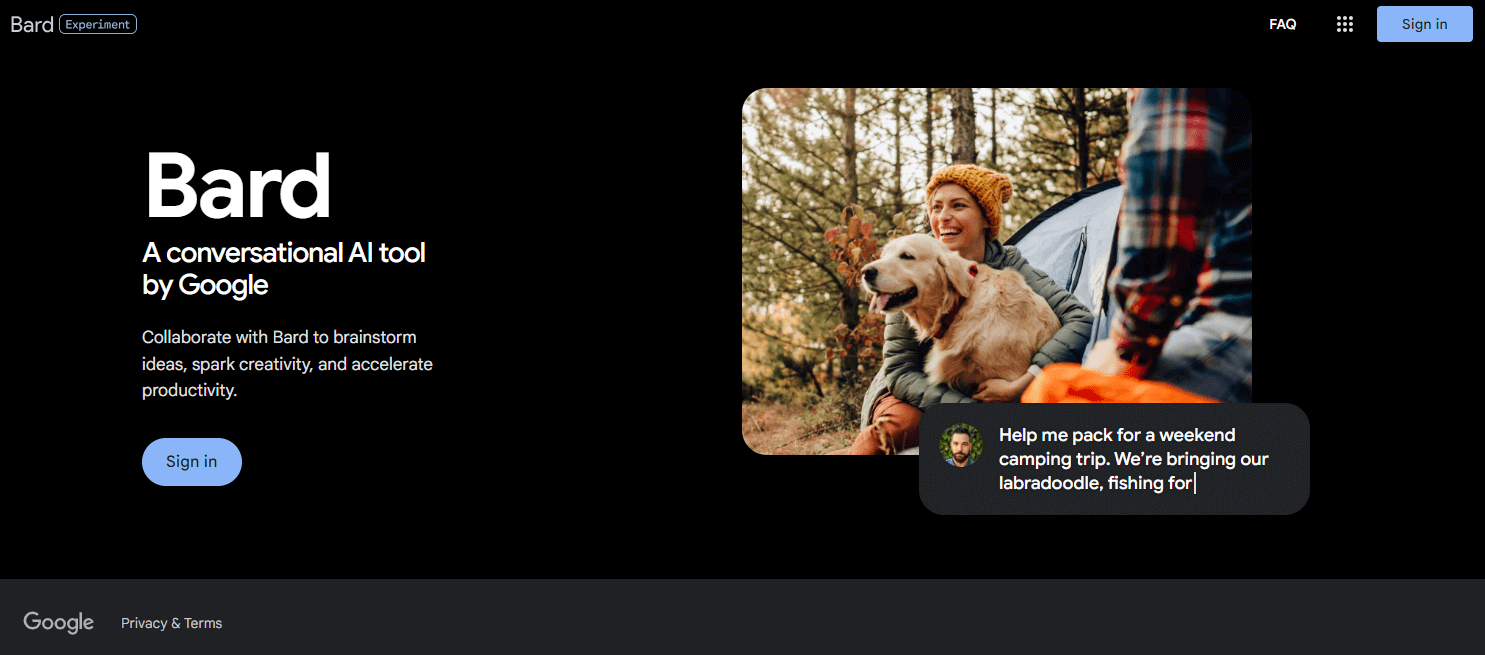
Pricing: Free to use
Use case: General purpose
Google Bard is an experimental conversational AI powered by PaLM 2, Google’s next-generation large language model. Moreover, with Bard, you can get answers to complex queries, math problems, code, or even plan your trips. This AI chatbot works like ChatGPT; you simply add a query or prompt, and Bard provides a response based on its data.
The main difference between this chatbot and tools like ChatGPT is that it can access the internet, meaning that you can easily paste a URL and ask it to summarize or find specific information.
Key Features
- Internet access
- Multilingual support
- Contextually relevant and coherent
- Highly customizable
- Multiple input types (text, voice, images)
- Integrations with CRM, Facebook Messenger (API), Slack, etc.
Pros
- Up-to-date information (web access)
- Advanced generative capabilities (text, translation, coding, etc.)
- Google products integrations and plugins
- Human-like conversations
Cons
- Inaccurate results
- Still experimental (limited dataset training)
- Not available everywhere yet
- Limited responses
3. Gorgias
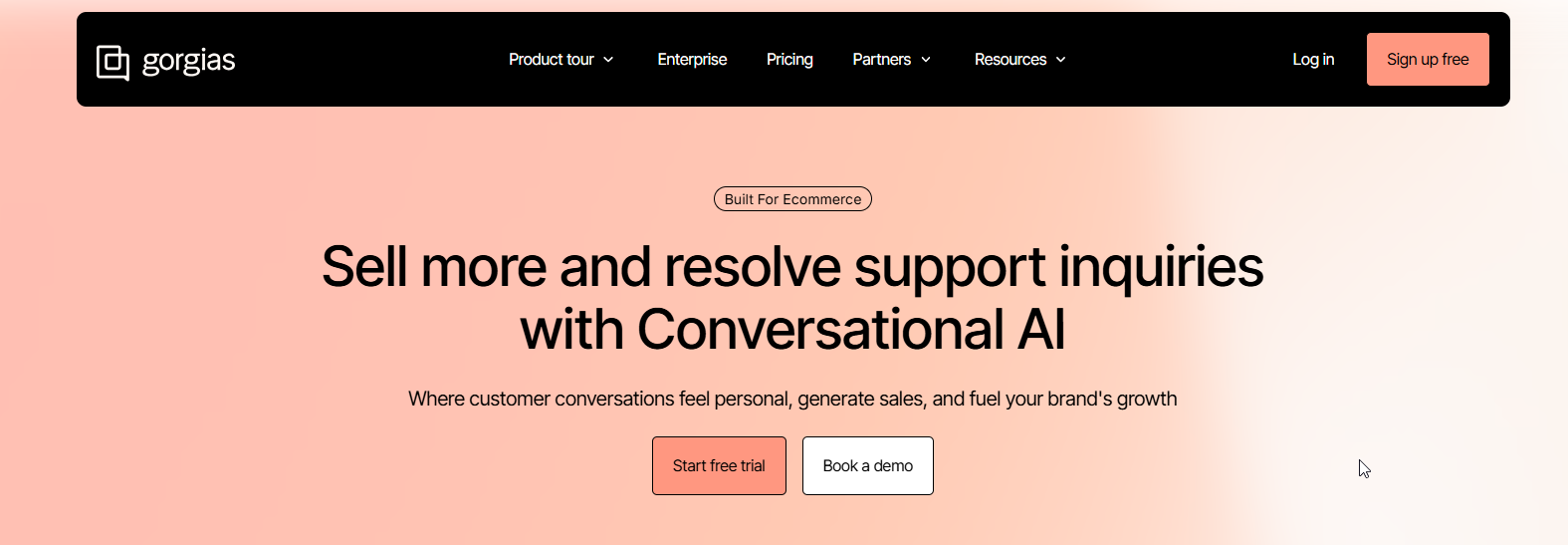
Pricing: Free 7-day trial, paid plans start at $10/month for 50 tickets
Use Case: eCommerce customer support
Gorgias is a helpdesk and conversational AI platform built with eCommerce teams in mind. It centralizes customer conversations (email, live chat, social, SMS) into one inbox and surfaces order and customer data directly in tickets. It also uses AI to classify intent, suggest or generate replies, and automate common workflows. Its features are designed to reduce response times and let agents take action from the same interface.
Gorgias also offers an AI Agent/intent detection layer that can auto-tag tickets, prioritize queues, generate suggested replies, and perform actions in Shopify—in the cases that this is configured and authorized. These actions include cancellations or refunds, shipping address edits, discount creation, etc.
Key features
- AI-assisted responses and intent detection (auto-tagging/routing) that drive automation rules
- Omnichannel inbox (email, chat widget, Facebook/Instagram messages, SMS)
- Deep Shopify integrations: view orders and customer data in-ticket, refund, cancel, edit orders and issue discounts from the helpdesk
- Performance analytics and QA tools (CSAT, response time, intent accuracy dashboards)
- Developer/API access and webhooks for custom integrations
Pros
- Agents see orders and can act without leaving the ticket
- AI features that reduce manual work (auto-tagging, suggested replies, automated order actions)
- Scales from small shops to enterprise volumes with ticket-based pricing
- Strong eCommerce-specific capabilities (prebuilt actions, common flows like returns and refunds)
Cons
- Ticket-volume based pricing can climb quickly as support volume grows
- Some advanced AI/automation capabilities may be hidden behind paywalls
- Can feel complex for very small teams who only need a simple shared inbox
4. Bing Chat
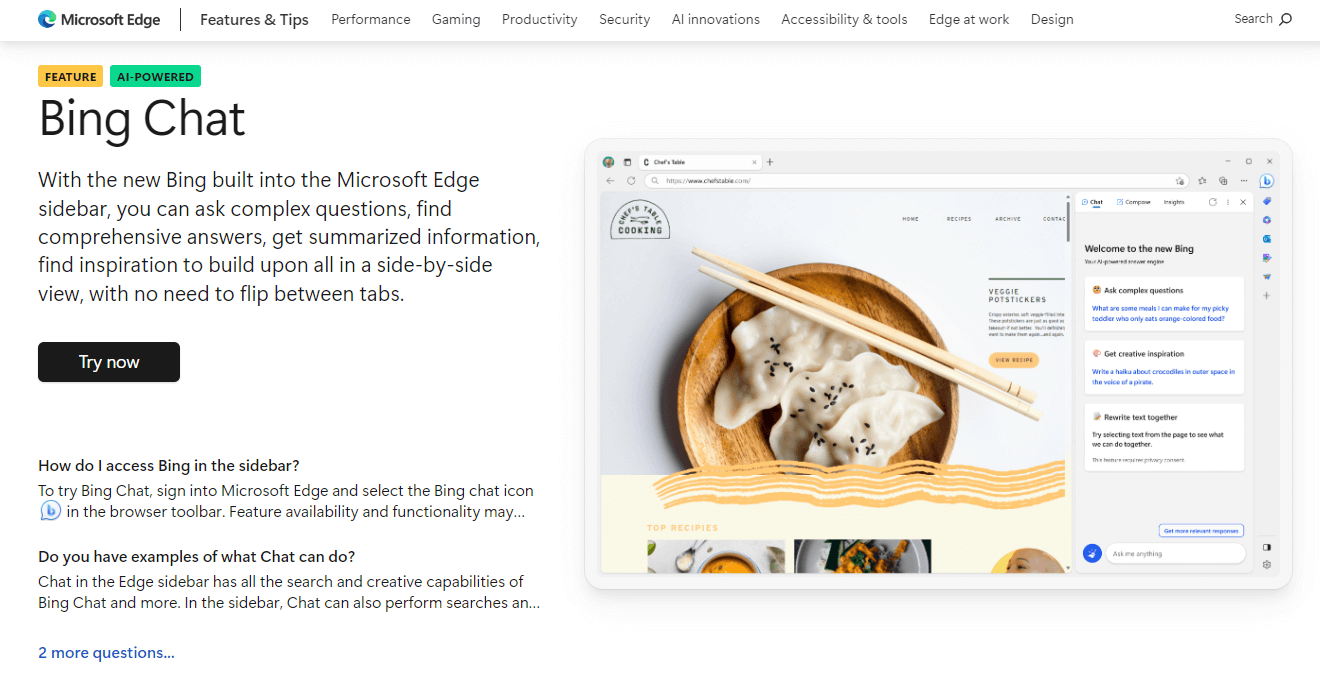
Pricing: Free to use
Use case: General purpose
Bing Chat is a chatbot powered by GPT-4, integrated into the Microsoft Edge sidebar. Users can ask questions and find quick answers to their questions. Since it can access the internet, you get up-to-date information just like with Google Bard and you can use it as a search engine. Moreover, the side-by-side view will help you minimize friction and give you a great experience with the application.
Among Bing’s capabilities, you’ll get the ability to compare products through your sidebar by making tables. Lastly, you can find the best deals and save time and effort searching manually.
Key features
- Summarization of long online documents
- Product comparisons
- Mobile access
- Send email via Outlook (upcoming)
Pros
- Available on more platforms than its competitors
- Up-to-date responses due to web access
- Accompanies by Bing Image Creator
- Different AI chat modes
Cons
- Occasional ads
- Not as human-like as other chatbots
- Limited integrations
- Not many available sessions
5. IBM Watsonx Assistant
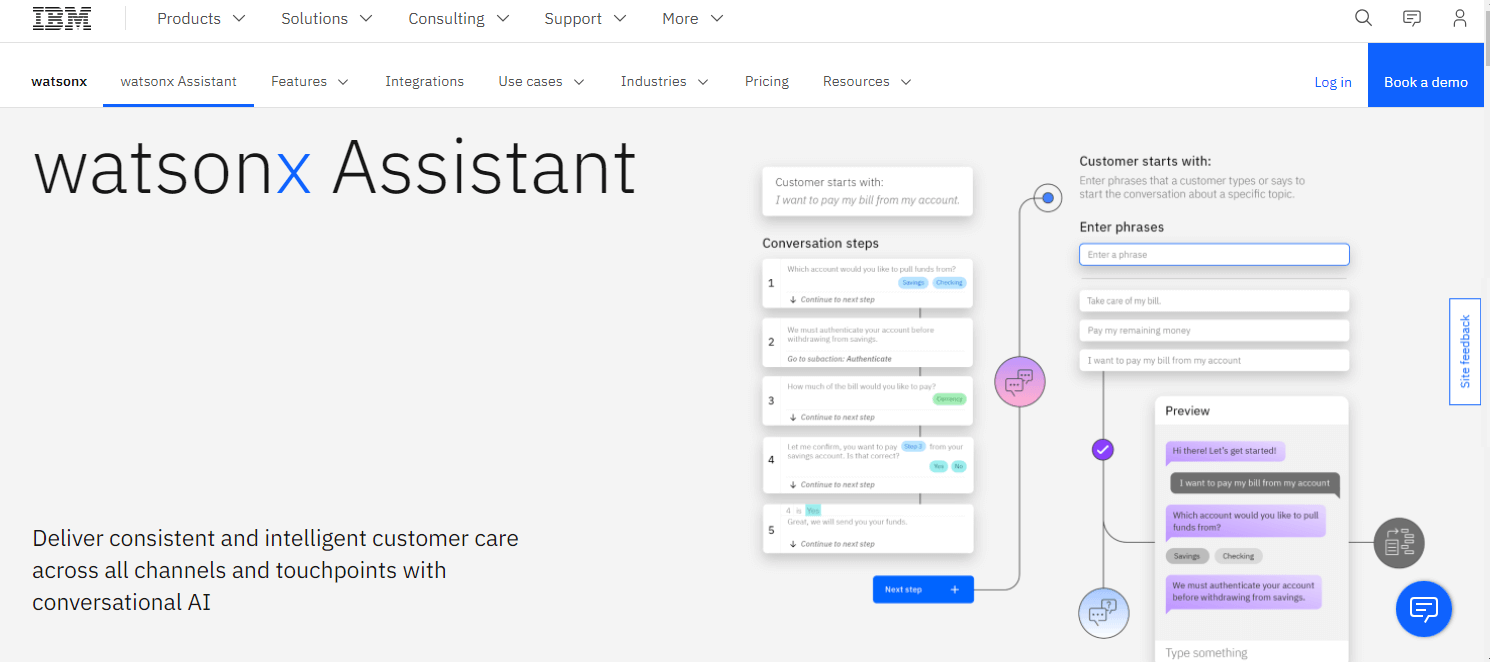
Pricing: Free plan, Paid plans start at $140/month
Use case: General purpose for enterprises
For a more enterprise-oriented AI chatbot, you may want to check out Watsonx Assistant, a general-purpose conversational agent by IBM. As a more specialized chatbot, users will have access to various features, including customer service desk integrations, analytics, autolearning, and more.
Enterprises signing up for a paid plan will have on their disposal enterprise-grade support and data governance. Also, they will have access to all the available features, such as activity tracking, and more.
Key features
- Deployment on Google, Amazon, and Microsoft, environments
- Search existing content
- Custom channel API
- Clarifying question
- Voice add-on
Pros
- Conversational and automation AI
- Customizability (APIs)
- User conversation analysis
- Understanding of text and speech
Cons
- Creating training data is difficult
- Steep learning curve
- Local languages need to be added manually
- Quite expensive
6. Perplexity
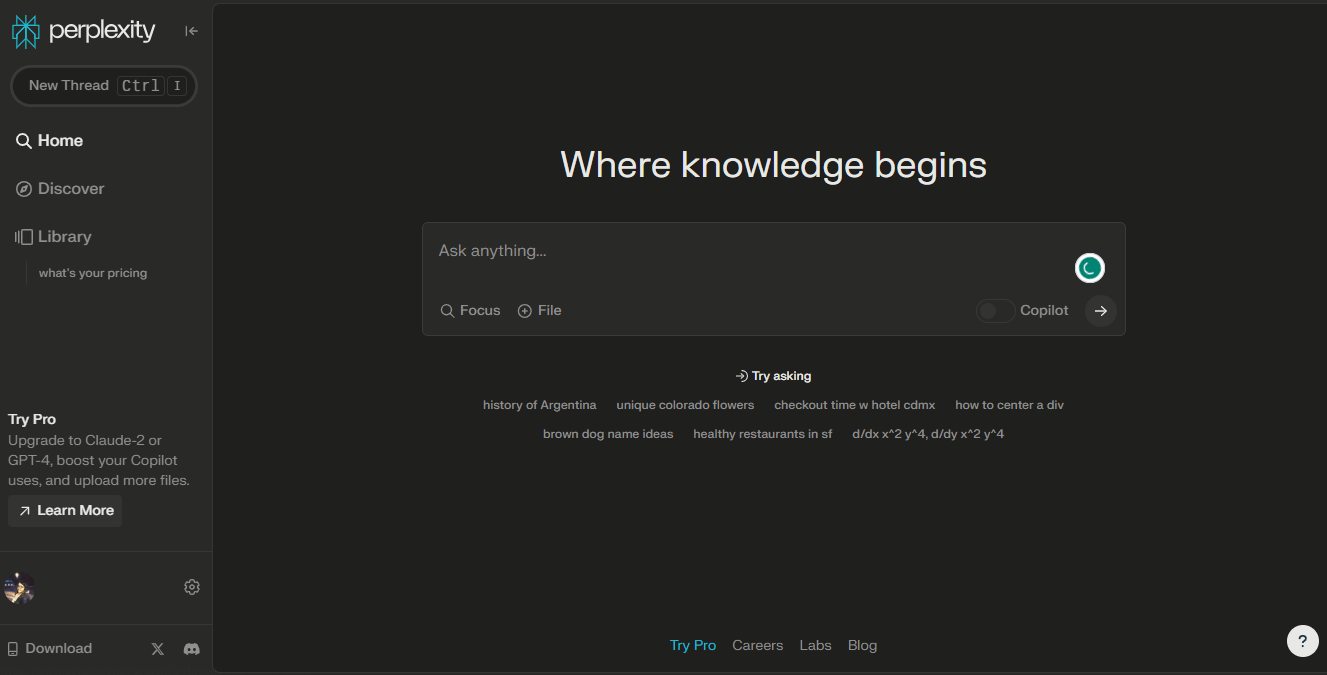
Pricing: Free to use, paid plans start at $20/month
Use case: Web search
Perplexity is an AI language model that can understand natural language and generate grammatically correct and semantically coherent responses. The chatbot employs machine learning to predict the most likely word in a sentence and give users relevant answers to their questions.
Moreover, Perplexity is free to use but you can upgrade to Pro to access Claude-2 or GPT-4 to increase Copilot uses (300+ per day), upload unlimited files, and access the fast API for open-source LLMs.
Key features
- Intuitive user interface for beginners
- Summarization capabilities
- Advanced text generation (research papers, essays, etc.)
- Claude-2 and GPT-4 models
Pros
- Provides up-to-date information
- Shows users the source of the information
- Uses GPT-4 to generate relevant answers
- Fast and comprehensive answers
Cons
- Not always reliable (based on the resources available)
- Unable to process more subjective questions
- May not catch idioms or nuances, resulting in inaccurate answers
7. Jasper
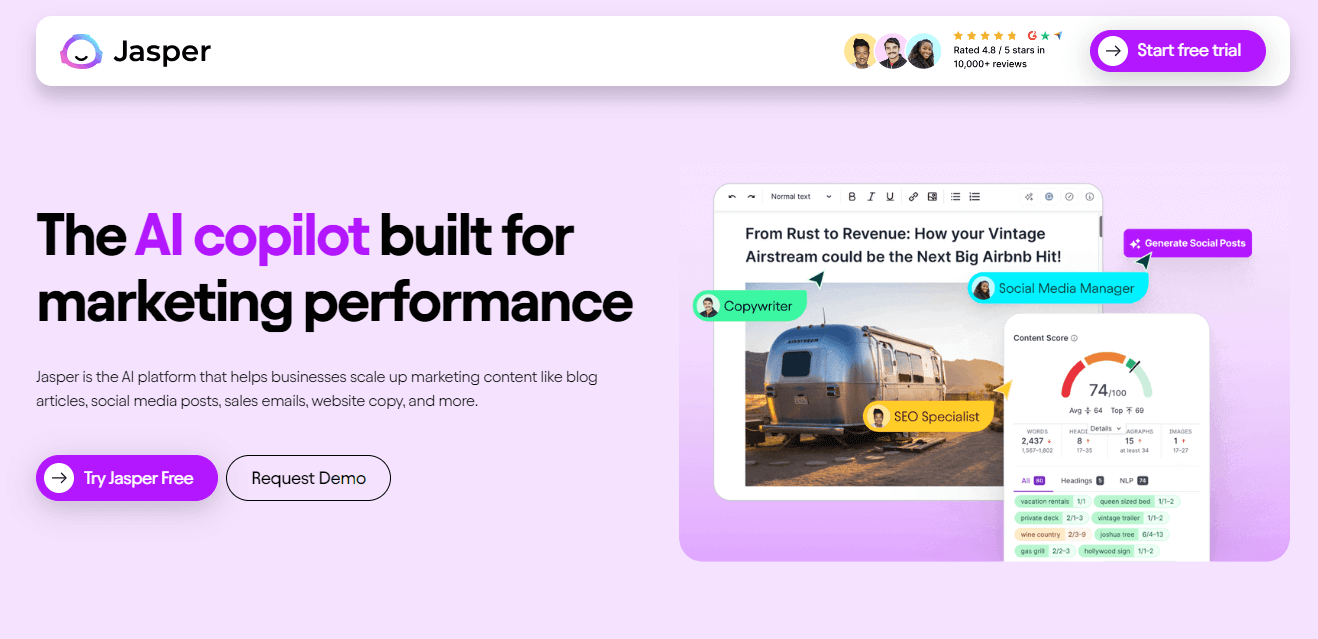
Pricing: 7-day trial, paid plans start at $49/month
Use case: Content generation, marketing
Jasper (formerly known as Jarvis) is among the best chatbot solutions for individual users, teams, and businesses. Compared to the above tools, it doesn’t have a free account to use but a 7-day trial to see how it works. Registered users also get access to various features, including brand voice, knowledge assets, templates, and SEO mode.
Moreover, you can use custom templates and automation, and leverage advanced admin analytics to monitor everything. As a copywriting-oriented tool, you can use Jasper to write text that converts, level up your content strategy, and boost traffic through SEO integrations.
Key features
- Pre-made and custom templates
- Collaboration & user management
- SSO and additional security review
- API access
- Brand voice
Pros
- Easiness of use
- Integrations with tools like SurferSEO and translation apps
- Content is checked for plagiarism and copyrights
- Converting copy, especially for email marketing campaigns
Cons
- Not always accurate feedback
- It can be quite expensive
- Limitations in content generation
- Sometimes facts aren’t correct
8. ChatSonic
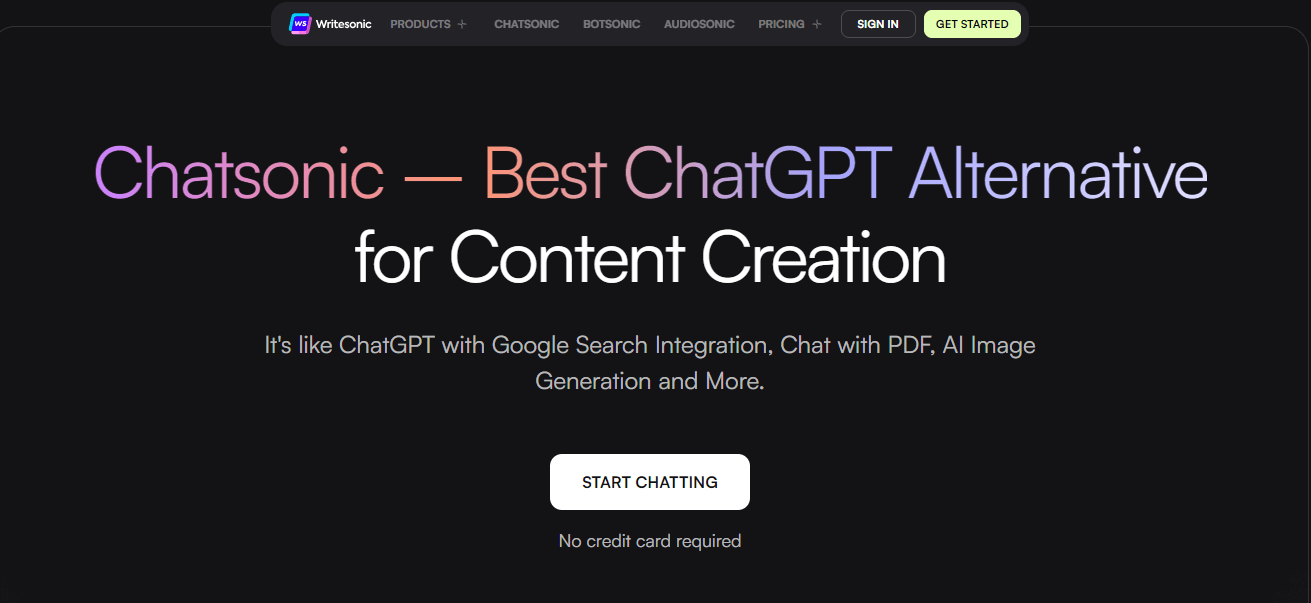
Pricing: Free plan, paid plans start at $19/month
Use case: Content generation, marketing, research, customer support
Chatsonic is another AI chatbot that markets itself as one of the best ChatGPT alternatives for content creation. Due to its vast abilities, the app is suitable for marketers who want to boost their brand awareness, researchers who want to fact-check information, and customer support agents who want to streamline query resolution.
The chatbot’s Google integration enables it to generate up-to-date responses, something that ChatGPT still has in beta. Lastly, you can drop files like PDFs, links, blog posts, or videos to get summaries of the content and then interact with them in a conversational way.
Key features
- Factual and personalized (AI Article Writer 5.0; Uses GPT-4 32K)
- 100+ AI templates
- Brand voice
- API access
- Zapier integration
Pros
- Ability to give voice commands
- Suggestions to boost creativity
- Cost-effective option compared to other tools
- Intuitive user interface
Cons
- Word limitations – you need to upgrade to get more
- Factual mistakes as with every other AI software
- The chatbot may also repeat itself and require human intervention
9. HubSpot Chatbot Builder
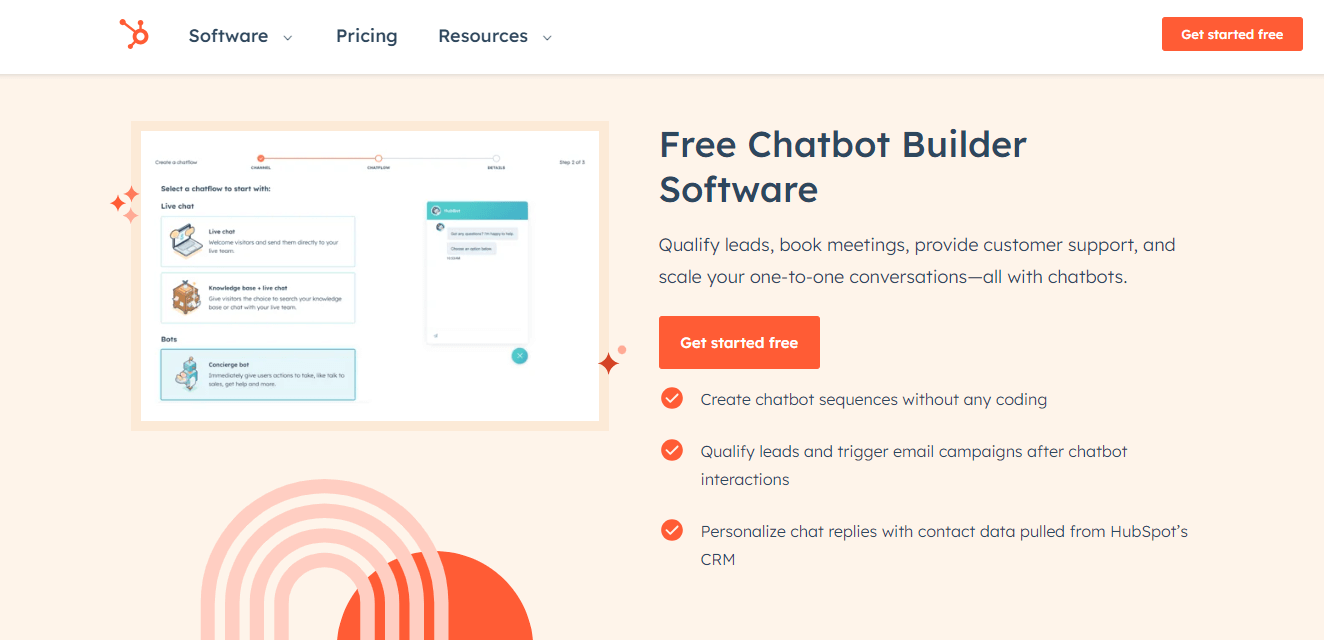
Pricing: Free to use, paid plans start at $20/month
Use case: Customer service, sales
Hubspot’s Chatbot Buider is part of the software’s Sales hub and it allows users to qualify leads, book meetings, service customers, and streamline one-to-one conversations. Moreover, you can use your chatbot to trigger email marketing sequences and personalize replies for a better customer experience.
HubSpot offers user-friendly templates and a straightforward chatbot builder that doesn’t demand coding expertise. You can select a template aligned with your objectives, then personalize the dialogue to resonate with your brand, incorporating your queries and content.
Key features
- Customizable templates
- Visual editor for branding and unique content
- CRM data synchronization
- Real-time conversations with website visitors
- Multifunctionality
Pros
- Integrated within HubSpot, reducing the need for multiple platforms
- Chat transcripts are automatically saved to known contacts
- Visual interface for creating chat flows (complexity may pose challenges)
- Allows users to enroll contacts into workflows directly from the chat flow
Cons
- Limited chat flow targeting
- Easy to miss entire conversations if not set up properly
- It can also lead to visitors being stuck without options to continue the chat
- Limited customization options – no video integration
10. Zendesk AI
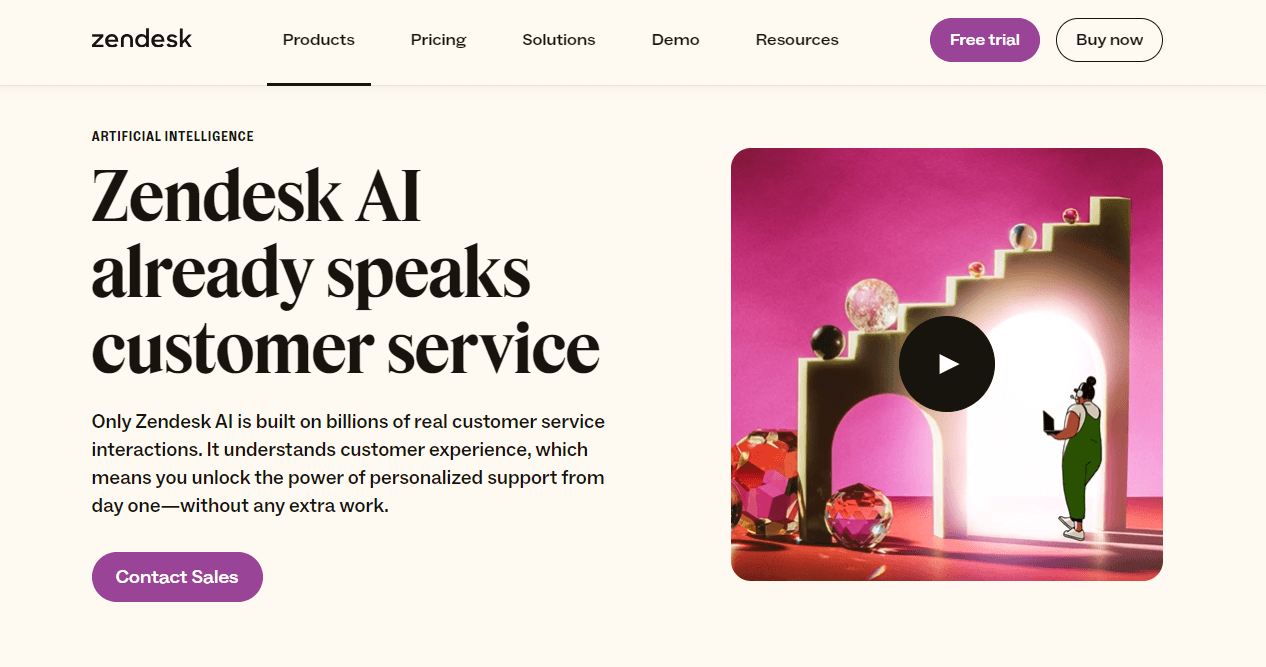
Pricing: 14-day free trial, paid plans start at $69/month
Use case: Customer service, CX
Zendesk’s AI chatbots are another great solution to power up your customer service and optimize the customer experience. Moreover, the tool is capable of solving customer problems without human intervention, redirecting them to the right resources for further assistance, and assigning them to the right agent.
Zendesk’s chatbots also integrate with Zendesk for Service for a more seamless connection. Apart from that, agents can take advantage of advanced tools, such as intelligent routing and intent recognition, to direct customers to the right person based on language, intent, and positive or negative sentiment. Lastly, the platform also collaborates with OpenAI to offer more generative AI solutions.
Key features
- User-friendly chatbot builder
- Intelligent routing
- Intent and sentiment recognition
- Reporting and analytics
- Integrations with third-party apps
Pros
- OpenAI collaboration
- Intelligent tools
- Omnichannel deployment
Cons
- It can also be quite expensive
- Limited customization options
- Basic collaboration tools
11. Salesforce Einstein
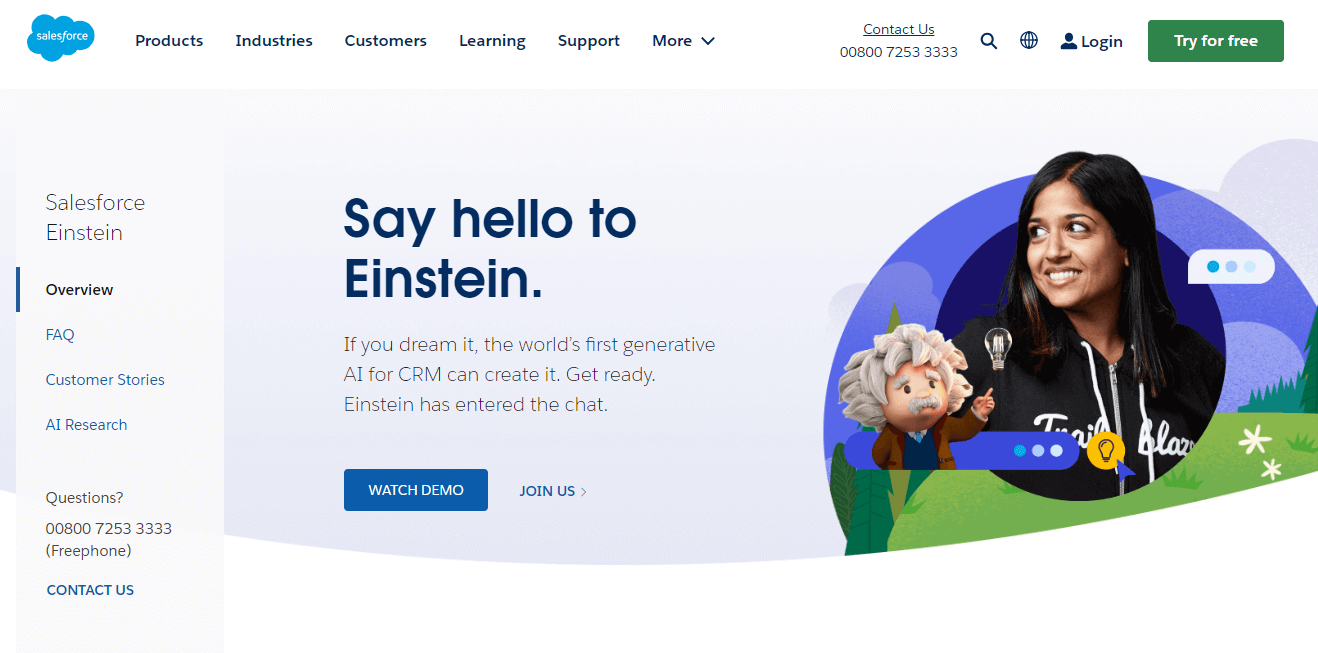
Pricing: Paid plans vary depending on use case
Use case: CRM, sales, commerce, and developers
Next is Salesforce Einstein, an AI-powered suite integrated into the Salesforce platform. The tool is designed to enhance customer relations and business productivity, offering options for service, marketing, developers, and commerce.
More specifically, Einstein helps sales teams guide leads from prospect to customer with real-time data and conversational intelligence. For customer service, it boosts agent productivity and offers AI-driven personalization to laser-target customers. In marketing, it enables real-time insights for personalized customer engagement, whereas it can help eCommerce businesses through intelligent product recommendations.
Lastly, Einstein offers data analytics through Tableau and facilitates automated workflows.
Key features
- Personalized email auto-generation
- Buyer assistant
- Lead scoring
- Conversation insights
- Sales analytics
Pros
- User-friendly creator
- Integrations with third-party applications
- Intelligent decision-making
- Can be tailored to individual business needs
Cons
- It can be overwhelming at first
- Expensive for smaller businesses
- Optimized for the Salesforce ecosystem
- Heavily dependent on the data you feed it
12. ChatSpot
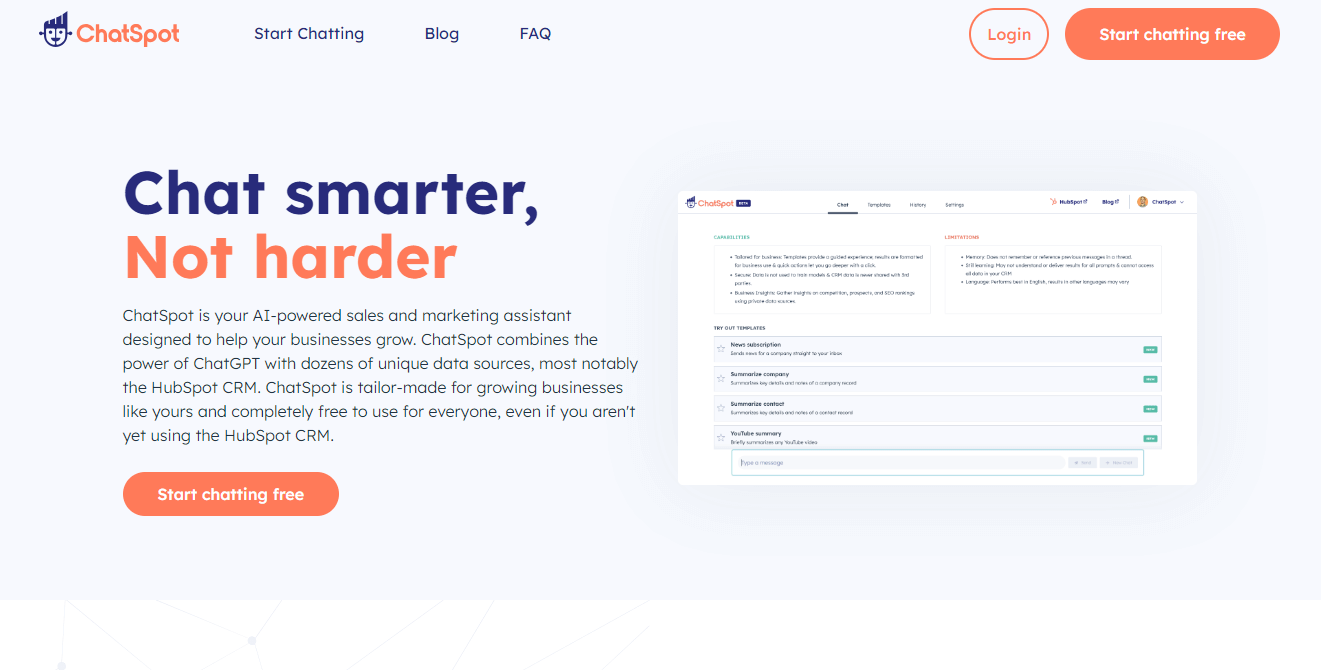
Pricing: Free to use
Use case: Sales and marketing
ChatSpot is a free AI-powered sales and marketing chatbot that integrates seamlessly with HubSpot CRM, using the power of ChatGPT. Designed to assist growing businesses, ChatSpot also offers various features that focus on data-driven insights, content generation, and sales prospecting.
Furthermore, the platform learns from your goals and customizes its interactions to suit your specific needs. Whether you are looking to accelerate sales, generate content, or analyze company data, ChatSpot is designed to improve your workflow and help you make better decisions.
Key features
- Personalized responses
- Integration with HubSpot CRM
- Deep insights
- SEO assistance
Pros
- Offers unique data insights
- Works effortlessly with HubSpot CRM
- Adapts to your business goals
- Robust features at zero cost
Cons
- It may not work as smoothly with other CRM tools
- Quality of insights also depends on data sources
- Clears chat history after reloading
- Takes time to complete tasks
13. Drift Custom Chatbots
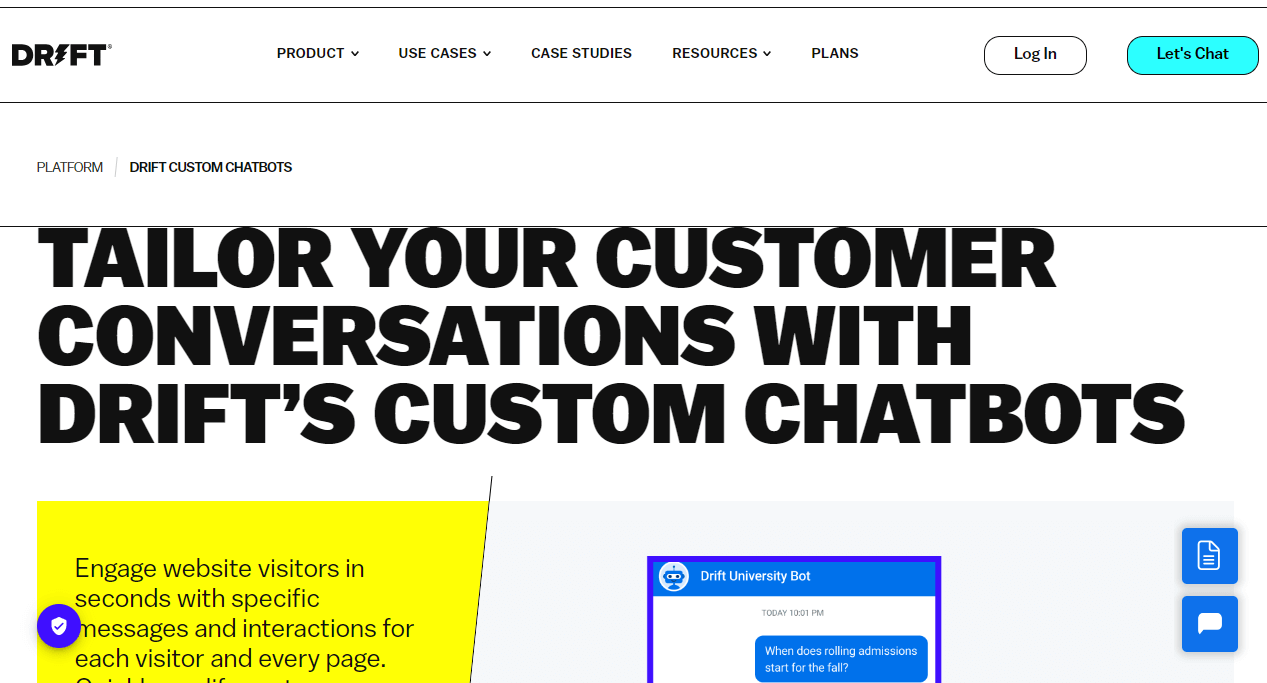
Pricing: Demo, paid plans start at $2,500/mo billed annually
Use case: Marketing and customer engagement
Drift Custom Chatbots is another great AI chatbot platform that offers a dynamic way to engage website visitors. The tool can be tailored to individual visitor profiles, providing real-time interactions, helping to quickly qualify customer interest, share content, and schedule sales meetings.
Moreover, this option offers A/B testing features to ensure that you get the most out of your marketing spend by turning website visitors into qualified leads through the power of personalized AI content.
Key Features
- Tailored interactions
- Pipeline acceleration
- Embedded A/B Testing feature
- Real-time engagement
Pros
- Automates the qualification process
- Provides a highly personalized user experience
- Ensures every dollar spent on marketing translates to more qualified leads
- A/B Testing allows for constant improvement based on metrics
Cons
- Very pricey for smaller businesses
- Handling of customer data must be compliant with privacy regulations
- Primarily designed for website interactions
14. Personal AI
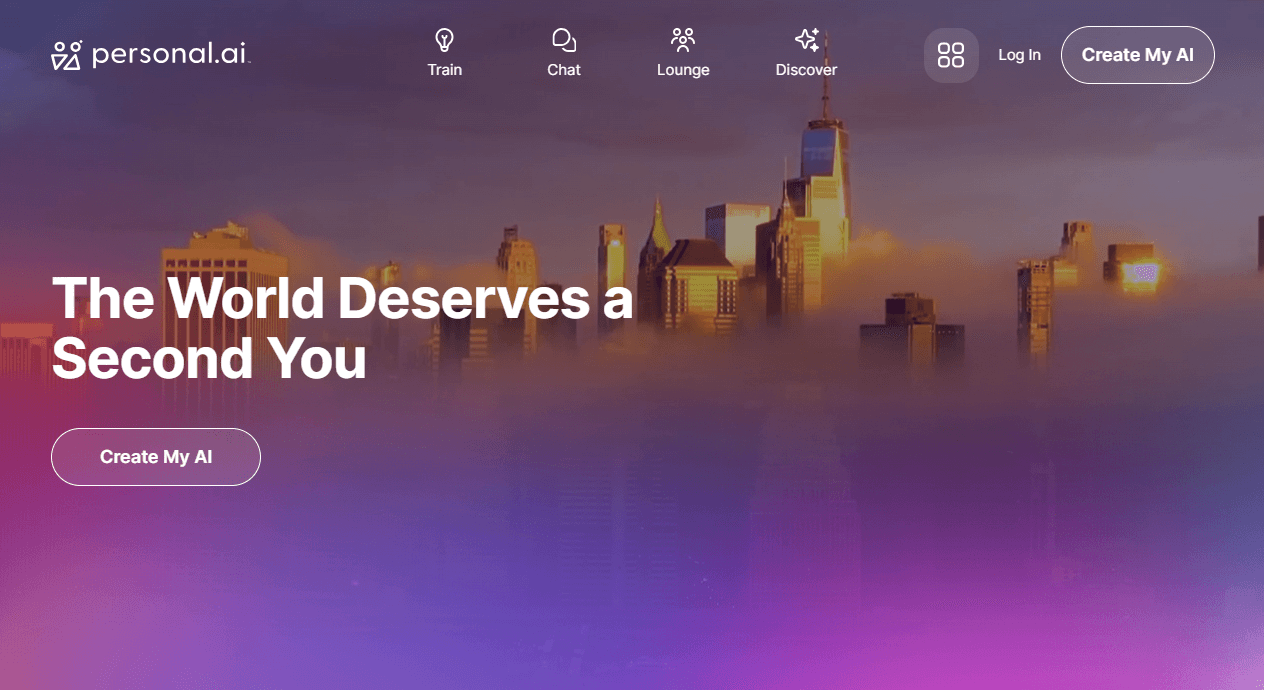
Pricing: Free to use, paid plans start at $15/month
Use case: Messaging and personal communication
Personal AI is an AI-powered chatbot offering a range of plans for individuals to enterprises, focusing on customizable language models and conversations.
Features like long-term memory, unlimited AI conversations, and multi-platform availability also make it a simple and versatile solution for personal communication. Various plans offer numerous benefits, from memory storage to API access and professional support, catering to both personal and commercial needs.
Lastly, the platform is available on multiple platforms, including Mac, Windows, Browser, iOS, and Android (soon).
Key features
- Unique personal language model (My AI)
- Collaborative spaces for discussions with multiple humans and AIs
- Long-term memory feature to train your AI
- Upload files and links
- Custom Personal AI domain
Pros
- Suits everyone from individuals to enterprises
- Tailored AI personas and domains
- Available on various operating systems and browsers
- Different plans to accommodate growing needs
Cons
- Higher-tier plans can get expensive
- Additional features and personas come with extra charges
15. Amazon CodeWhisperer
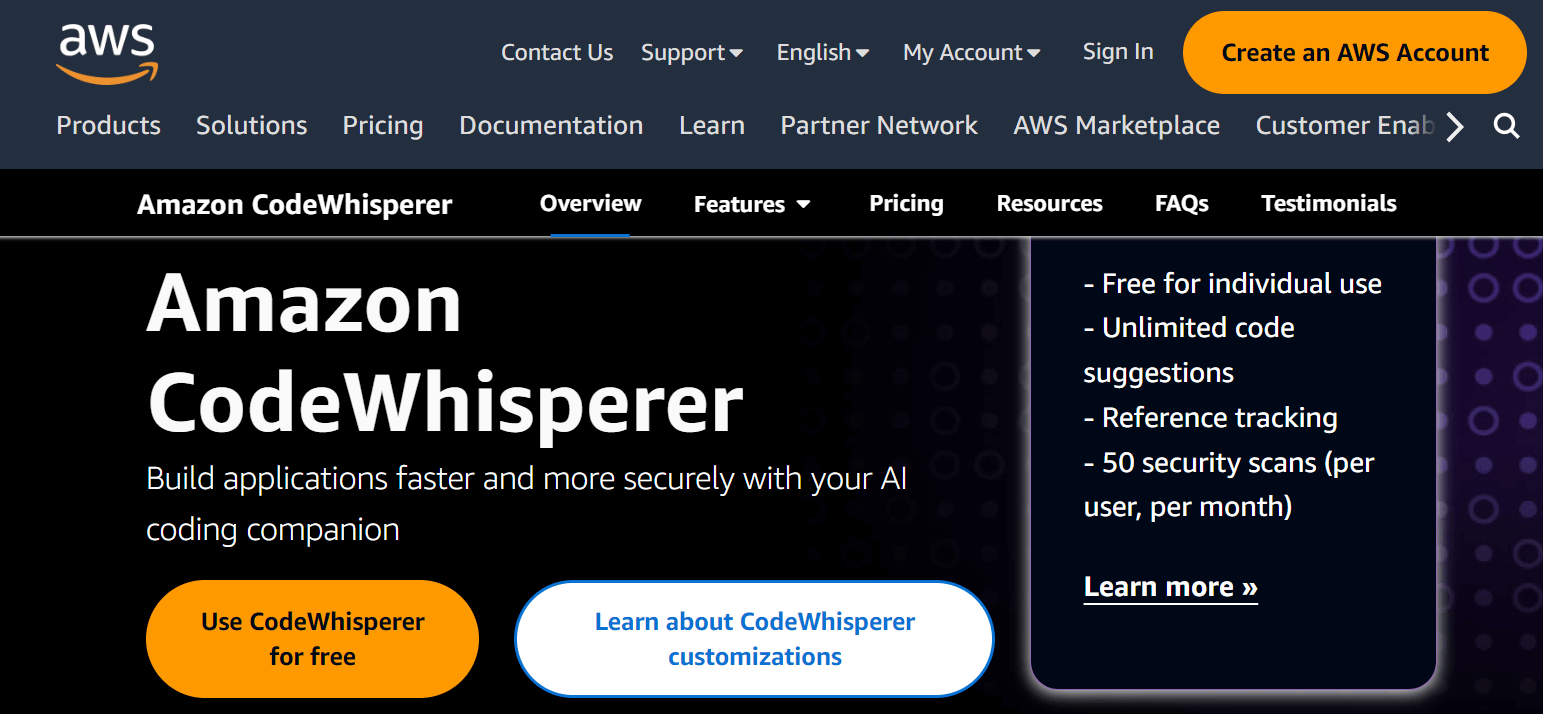
Pricing: Free to use, paid plans start at $19/user/month
Use case: Developers and applications
Amazon CodeWhisperer uses the power of AI to generate code suggestions swiftly and securely. Geared toward developers, it can help with application building, and offer unlimited suggestions, reference tracking, and security scans.
Moreover, with billions of code lines as its foundation, CodeWhisperer streamlines coding tasks, ensuring confidence in code quality and enhancing security protocols. Customizable to internal libraries, it integrates seamlessly with 15 programming languages and popular IDEs, fostering productivity and code reliability.
Key features
- Comprehensive language and IDE support
- Reference tracking
- Code security scans
- Customization options through internal libraries, APIs, packages, etc.
Pros
- Accelerates coding tasks, reducing development time significantly
- Works seamlessly with various programming languages and popular IDEs
- Identifies vulnerabilities and provides actionable suggestions
- Enables customization, making recommendations more relevant
Cons
- Initial adjustment may be required
- Pricing for business needs might be a consideration
- Accuracy of suggestions also relies on the quality of the data fed into the system
- Tailored for Amazon’s ecosystem, which could pose limitations
16. Pi
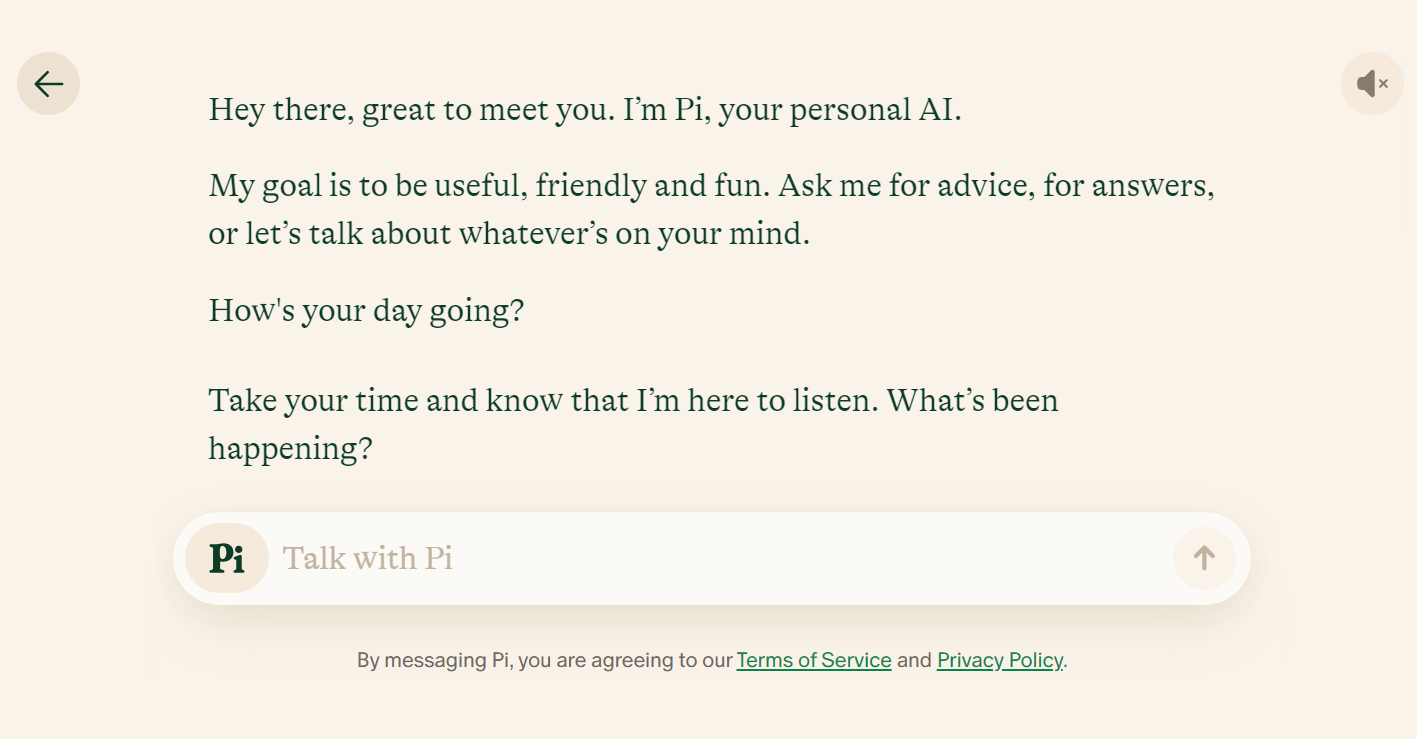
Pricing: Free to use
Use case: Coaching and self-improvement
Pi is a personal AI chatbot that can help you with various tasks, including brainstorming ideas, learning about something new, practicing an important conversation, planning your career, or helping with homework.
Moreover, you can use this tool for self-improvement. Among other things, Pi can offer relationship advice, let you vent, journal it out, motivate you, or help you think of a gift to give. While Pi’s advice won’t be equal to professional assistance, it’s a great way to get some initial information before you plan your next step.
Key features
- Easy-to-use UI
- Personalized and natural message exchange
- Voice options with numerous settings
Pros
- Variety of options
- User-friendly and fun interface
- Available voice options
Cons
- Can’t replace professional advice
- Inaccurate responses
Now that we checked some of the best chatbots, let’s see some of their limitations.
AI Chatbot Limitations
Chatbots have many advantages; however, there are certain limitations that you need to be aware of.
Understanding and interpretation
While they seem capable of doing everything, chatbots don’t possess any Emotional Intelligence (EQ). This means that they can’t understand emotionally sensitive context, which is important for customer support.
Moreover, advanced AI chatbots can struggle to understand the context of a conversation fully due to them being phrasing-sensitive and sometimes biased, which can lead to incorrect or inappropriate responses.
Technical complexity
Setting up an AI chatbot often requires resources and expert staff to train the model. Of course, don’t forget that machine learning models need ongoing training to adapt to new data or scenarios.
This makes them more complex and, even, pricier to maintain.
Language and Localization
Language constraints are a big issue when it comes to providing more tailored experiences to users or customers.
Chatbots are often limited to the languages they’ve been trained in and can struggle with dialects or colloquial phrases.
Since they aren’t human, they may not understand cultural references, euphemisms, or localized expressions, which can potentially lead to misunderstandings and miscommunication.
Ethical and security concerns
Data privacy concerns have always been a major issue since AI chatbots collect and process user data.
Moreover, there is a risk of them being used for fraudulent activities by malicious users.
Accuracy and reliability
Chatbots rely on pre-training on large datasets to be able to recognize patterns and provide accurate and relevant information.
This is directly linked to the quality of its training data. Using poor or biased data will lead to misinformation and biased content.
Moreover, AI chatbots can only handle situations they’ve been trained for, resulting in them being unable to respond to things they don’t know or give irrelevant answers.
User Experience
AI chatbots have the answer to everything…. Wrong. That’s what a large number of people believe, resulting in creating over expectations that later on lead to dissatisfaction.
Also, depending on how well they are integrated, chatbots could provide a disjointed user experience. In that case, a human agent has to intervene to solve the problem.
AI Chatbots Are Here To Stay
The rise of AI chatbots has transformed the way businesses interact with their customers and users. Their rapid responses, ability to automate tasks, and round-the-clock availability have made them invaluable tools for professional and individual use.
Whether it’s providing instant customer support, answering FAQs, assisting in creative writing, enhancing brand engagement, or helping you improve yourself AI chatbots have proven their versatility.
Lastly, before you start using one or more of the above, it’s important to recognize their limitations. These chatbots operate based on the data they’ve been trained on, which can introduce biases and limitations in their responses. So, make sure you use them wisely to unlock their full potential.
Frequently Asked Questions
Simple answers to common questions.
1. How do AI chatbots differ from rule-based chatbots?
AI chatbots use machine learning algorithms and Natural Language Processing (NLP) to understand the context and intent behind user queries. Rule-based chatbots, on the other hand, follow pre-defined rules and decision trees, offering limited answers.
2. Can AI chatbots be customized for specific tasks?
Yes, AI chatbots can be customized for specific tasks. They can also be trained on domain-specific data and tailored to handle particular interactions, making them highly adaptable to different business needs.
3. What is the future of AI chatbots?
The future of AI chatbots involves continued advancements in natural language processing, reduced biases, improved contextual understanding, and enhanced personalization. As AI technology evolves, chatbots are likely to become even more sophisticated and seamlessly integrated into various aspects of our daily lives.


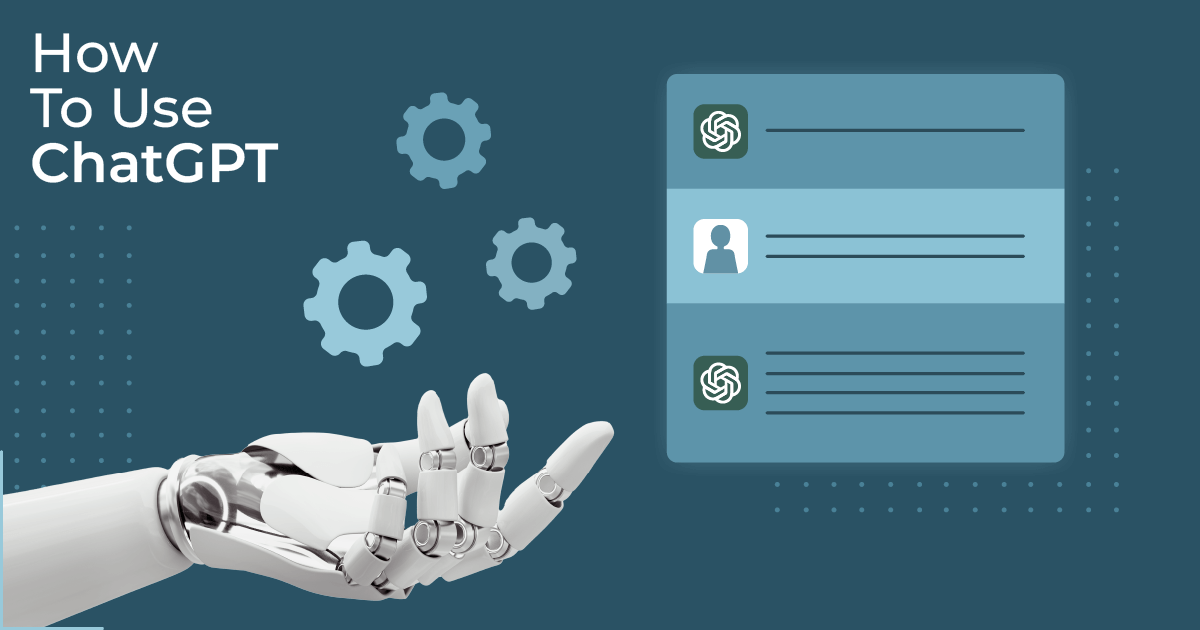
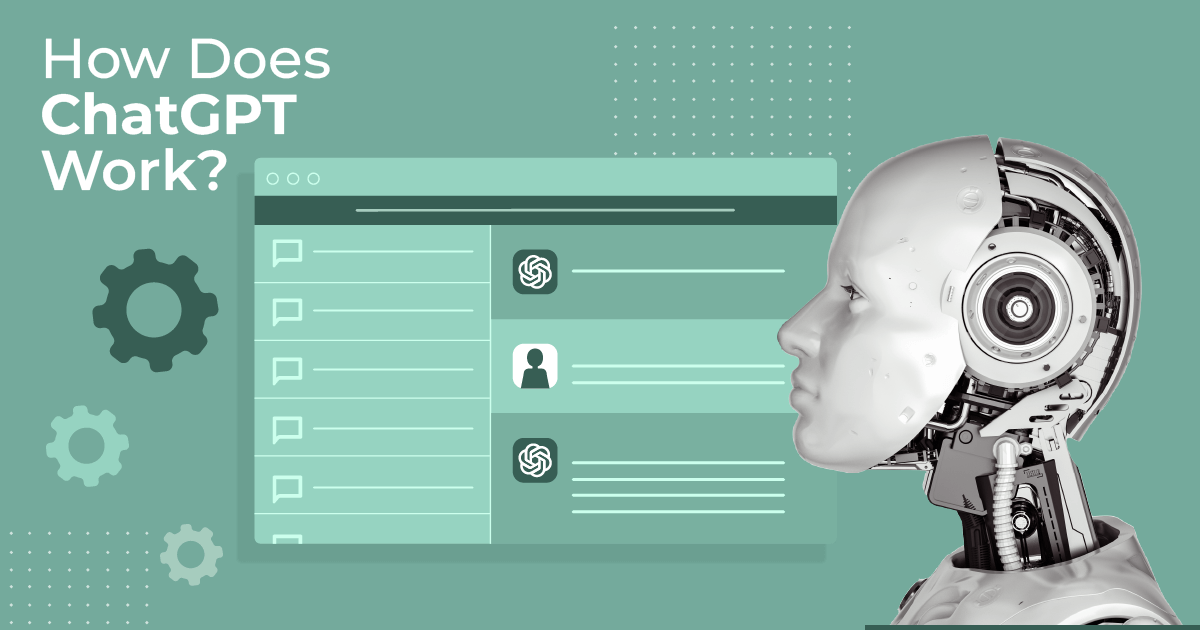
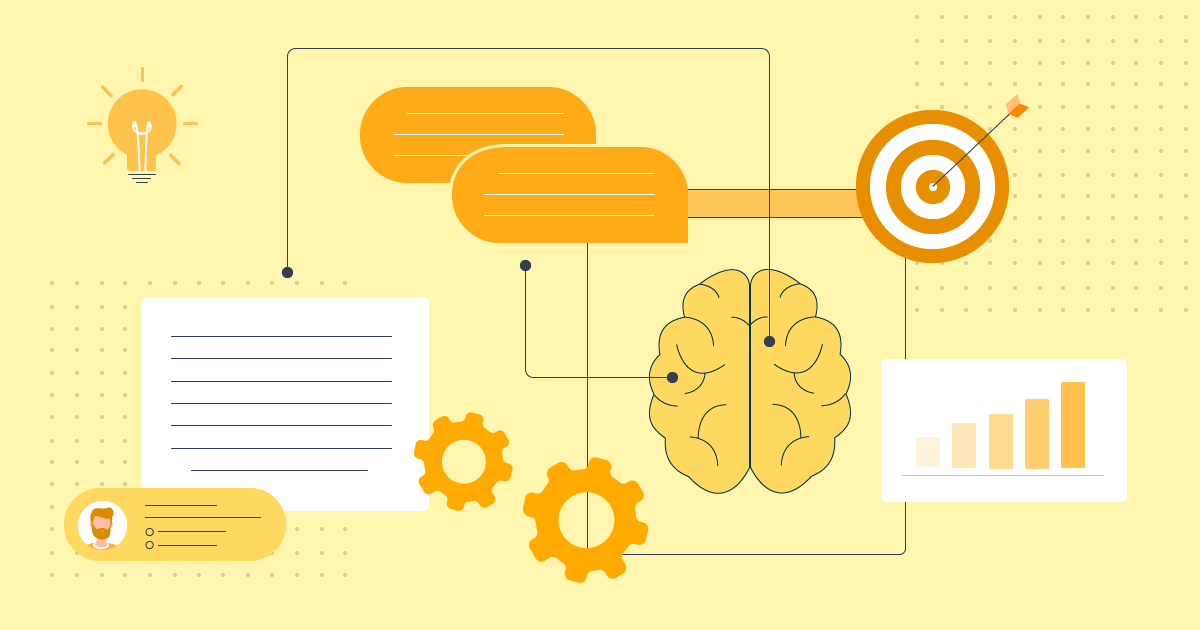
 Published by
Published by